Posts Tagged: citrus
Cleaning the Tongue: A, B, C
So here you are, a honey bee seeking nectar from an unopened citrus blossom. And then your tongue (proboscis) becomes all sticky with pollen, nectar and other particles. What to do: you, the worker bee, take a brief break and clean your...
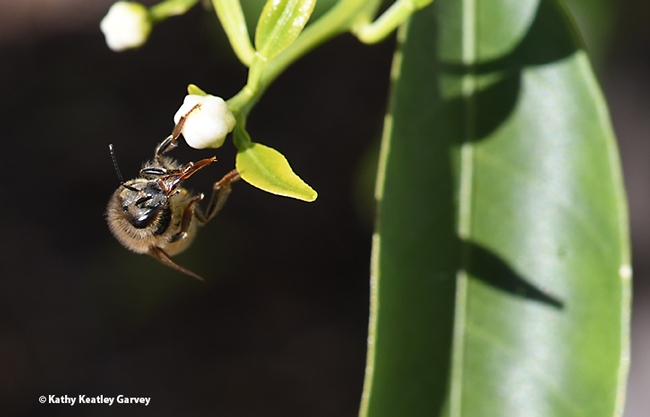
A honey bee takes a break and cleans her proboscis (tongue) after foraging on a citrus blossom. (Photo by Kathy Keatley Garvey)
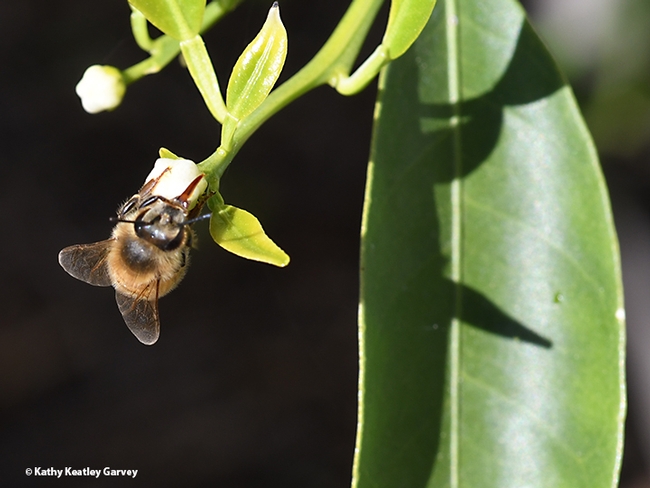
Break over and time to get back to work! A worker bee and a mandarin blossom. (Photo by Kathy Keatley Garvey)
Deadly Citrus Greening Disease: A Better Lure for Asian Citrus Psyllids
If you like or grow citrus, you ought to be worried about the worldwide threat of the deadly citrus greening disease (Huanglongbing or HLB) caused by infected Asian citrus psyllids (ACP). The global economic toll is already estimated in the...
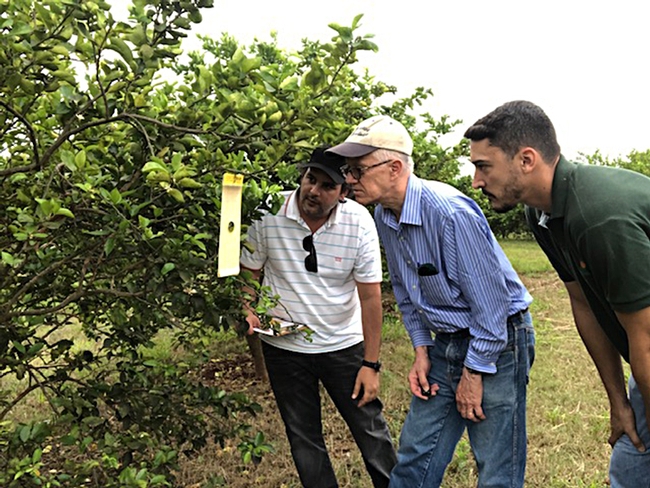
UC Davis chemical ecologist Walter Leal (center) examines a lure in Mogi Mirin, São Paulo on Brazil’s Independence Day (Sept. 7) with Haroldo Volpe (far right) and Renato de Freitas, both of Fundecitrus.
Targeting the Asian Citrus Psyllid
While you're peeling and segmenting your orange at breakfast or spooning orange honey on your toast, you're probably not thinking about the Asian citrus psyllid. But Mark Hoddle, Extension entomologist and director of the Center for Invasive...
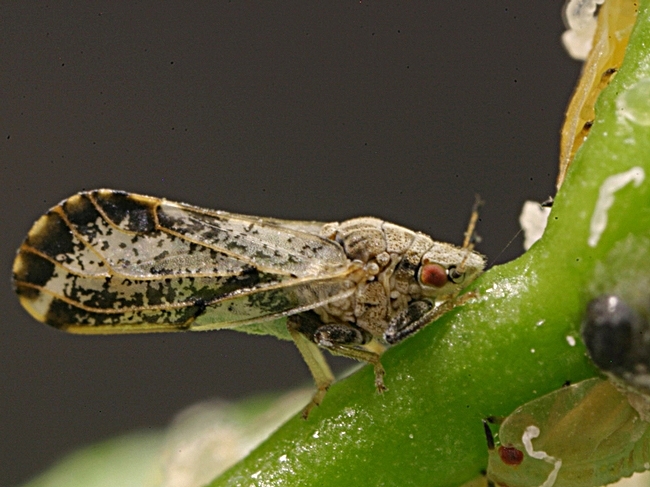
The Asian citrus psyllid, about the size of an aphid, is a major threat to the multibillion dollar citrus industry in the United States.(Photo courtesy of the California Department of Food and Agriculture)

Mark Hoddle, Extension entomologist and director of the Center for Invasive Species Research at the University of California, Riverside, will speak on “Protecting California Agriculture from Invasive Pests: Biocontrol of Asian Citrus Psyllid in Urban Southern California" on Sept. 26 at UC Davis. (Photo Courtesy of UC Riverside)
Targeting the Asian Citrus Psyllid
A major citrus pest may experience a “Bah, Humbug!” kind of year. If all goes as planned, UC Davis chemical ecologist Walter Leal's discovery of the sex pheromone of the Asian citrus psyllid--which spreads the deadly citrus greening disease,...
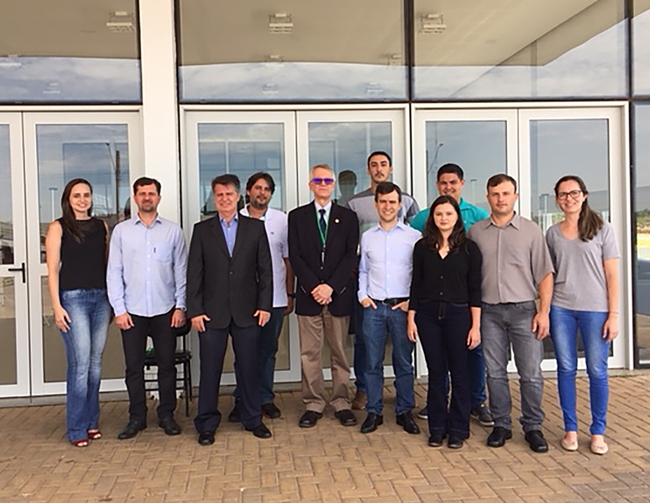
The Asian Citrus Psyllid Team: Scientists in the front row (from left) are Tatiana Mulinari, Rodrigo Magnani, Antonio Juliano Ayres, Walter Leal, Marcelo Miranda, Victoria Esperanca, Odimar Zanardi, and Rejane Luvizotto. The three scientists in back are Haroldo X. L. Volpe (white shirt) Renato de Freitas and Rômulo Carvalho.
Ground-Breaking Research: Sex Pheromone of Asian Citrus Psyllid Discovered
The Asian citrus psyllid, the most devastating threat to the worldwide citrus industry, may have met its match. In a ground-breaking discovery encompassing six years of research, an international team of scientists led by UC Davis chemical ecologist...
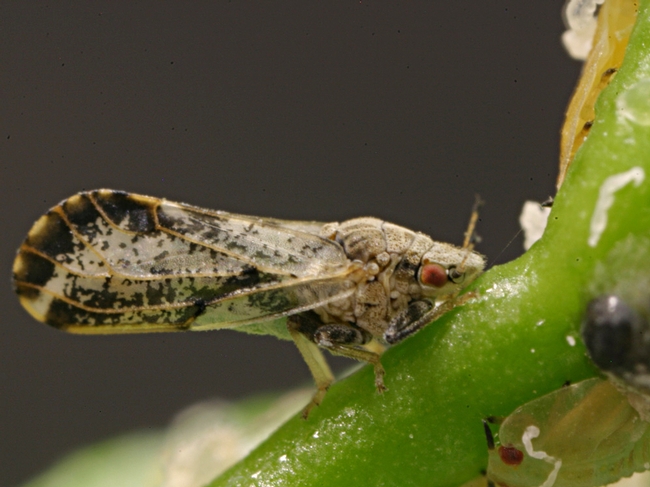
This is the Asian citrus psyllid, a mottled brown insect about 3 to 4 millimeters long, or about the size of an aphid. Widespread throughout Southern California, it is now found in 26 of the state's 58 counties. (CDFA Photo)
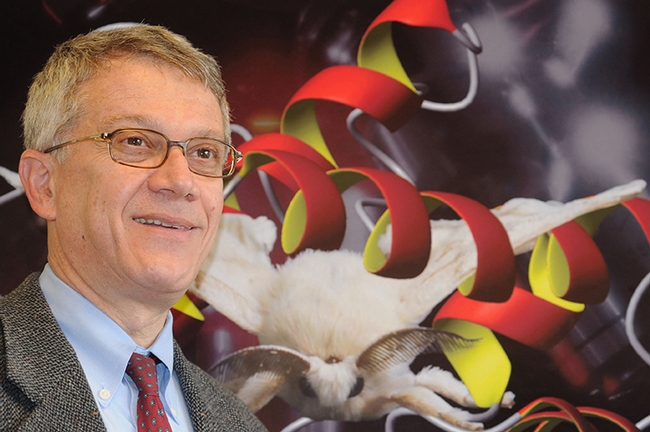
UC Davis chemical ecologist Walter Leal has just discovered the sex pheromone of the Asian citrus psyillid. He has also discovered the sex pheromones of a number of other insects, including moths (background). (Photo by Kathy Keatley Garvey)
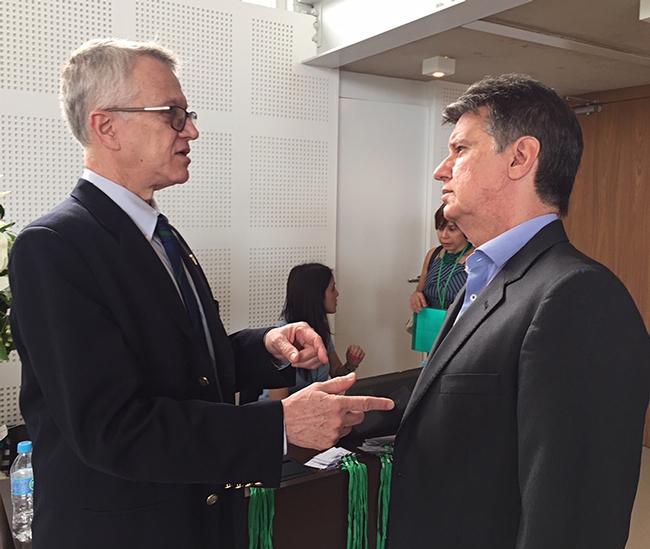
UC Davis chemical ecologist Walter Leal (left) talks with FUNDECITRUS director Juliano Ayres on Dec. 5 at the 10th Annual Meeting of Chemical Ecology in Sao Paulo.

